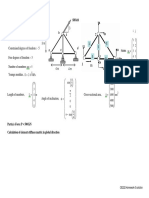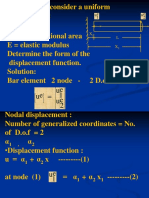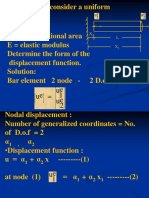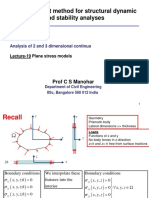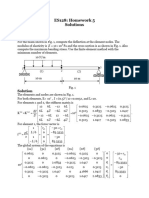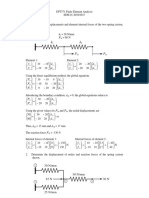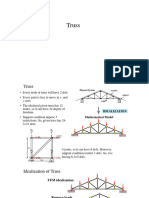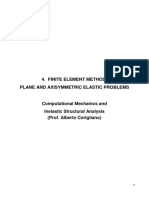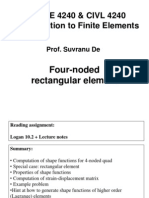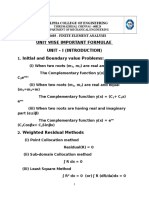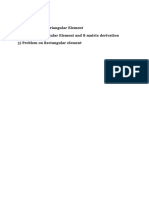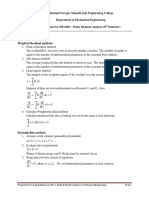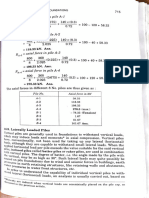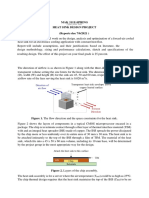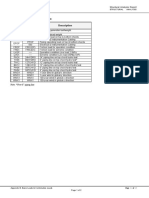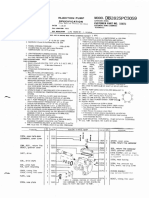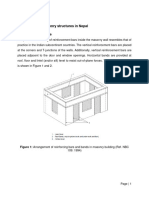0% found this document useful (0 votes)
91 views7 pagesSolution Homework4
1) The problem involves a triangular mesh element with mixed boundary conditions subjected to traction.
2) The stiffness matrix K, force vector f, and displacement vector d are derived analytically.
3) The displacement and stress solutions are obtained by solving the system Kd=f.
4) The displacement is found to be d=(0.7799, 0.7799) and the stress at (1.5,1.5) is σ=(15,15,0).
Uploaded by
R ShyamCopyright
© © All Rights Reserved
We take content rights seriously. If you suspect this is your content, claim it here.
Available Formats
Download as PDF, TXT or read online on Scribd
0% found this document useful (0 votes)
91 views7 pagesSolution Homework4
1) The problem involves a triangular mesh element with mixed boundary conditions subjected to traction.
2) The stiffness matrix K, force vector f, and displacement vector d are derived analytically.
3) The displacement and stress solutions are obtained by solving the system Kd=f.
4) The displacement is found to be d=(0.7799, 0.7799) and the stress at (1.5,1.5) is σ=(15,15,0).
Uploaded by
R ShyamCopyright
© © All Rights Reserved
We take content rights seriously. If you suspect this is your content, claim it here.
Available Formats
Download as PDF, TXT or read online on Scribd
/ 7

